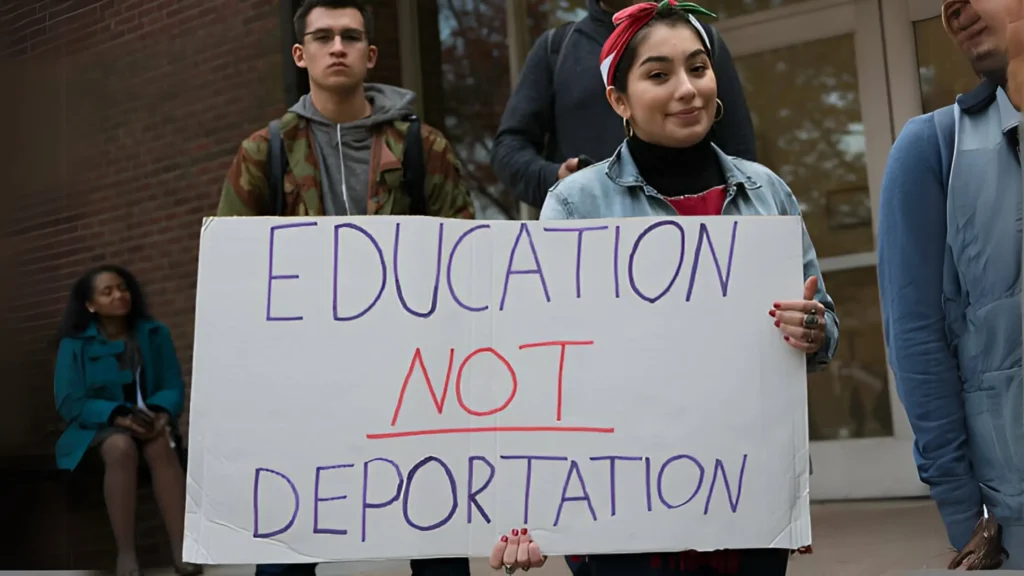Donald Trump’s Trump education plan involves a public education system that removes the federal influence and gives greater power to the parents. The following examines 15 areas of impact that would see the Department of Education dismantled, curriculum changed, and student aid overhauled. Anybody worried about American education’s future needs to be able to grasp these possible changes.
Impact on 50 Million Students
Donald Trump has always been committed to ending the U.S. Department of Education, and that would create a massive impact on the American education system. The department has been established in 1979, and it is important in the management of educational institutions by means of economical funding, superintendence of student loans, and realization of programs to help low-income students. The number of students impacted is said to be 50 million students in almost nearly 18,200 school districts. Trump education plan sees the agency as too intrusive of students, and to indoctrinate and abolish it would require Congressional approval, which is a difficult threshold to clear.
Changes to Federal Student Aid and College Affordability
Federal Student Aid takes almost $69 billion of the Department of Education’s budget. By dissolving the department, management of this aid is thrown into question—would disbanding this department hurt college affordability and access, especially for low-income students? Questions about who would continue to oversee the distribution of funds that are now under the auspices of the Office of Federal Student Aid, as well as whether there are alternative possibilities to moving FSA from its current home in the Education Department, remain under Trump education plan.
Loss of Federally Guaranteed Protections for Students
Pulling up the Department of Education is worrisome. Title IX protections that prevent sex-based discrimination in educational programs are at stake. But Trump education plan has expressed a wish to get rid of “wokeness” and limit the estimation of gender character. However, this could affect an exceptionally large number of LGBTQ+ students, potentially reversing protections and heightening discrimination, but schools would have to abide by Title IX requirements. If the office overseeing Title IX enforcement, the Office of Civil Rights, is shifted to another department, it could muddy the waters for families looking to resolve civil rights complaints.

Increased Emphasis on School Choice and Vouchers
By advocating for universal school choice, Trump education plan champions freedom of parents to choose whether to send their children to their private, charter, or homeschooling school with their public funds. Advocates argue that it opens the door to minority, low-income students; opponents worry that it funnels money out of the public school system, widens the wealth gap, and favors profit over children’s welfare.
Impact on Special Education Programs and Funding
More people are concerned about special education if the Department of Education is dismantled. Trump education plan plays a crucial role in providing students with disabilities with resources and help. Without federal funding, oversight, and programs, there is a risk of program and funding going unfunded and rights going unprotected. On the other hand, the provisions of IDEA for students with IEPs might also be in jeopardy and put students with special needs at risk for lack of the support available for them.
Changes to Curriculum and Instruction
For Trump, schools are a political arena where he is trying to erase, as he calls it, ‘left-wing indoctrination.’ Reducing school funding for those promoting critical race theory, gender identity education, or whatever he finds inappropriate is a part of Trump education plan. Such an approach may change curriculum and instruction dramatically, leading toward “patriotic education” and leaving out discussions of racism, white privilege, and gender identity. Such changes might constrain the scope of students’ experiences of learning, their exposure to different perspectives, and their ability to critically evaluate complex human issues. These measures, critics say, are political and could operate to undermine public education by stifling necessary dialogue on race, gender, and inequality.
Potential for Uneven Access to Resources Across States
Reducing federal involvement in education might increase disparities in quality and resources among states. States with lower incomes may find it difficult to sufficiently fund schools without federal assistance. Trump education plan could intensify inequities in teacher quality, resources, and support. Substantial funding gaps already impact students in underprivileged areas, which could undermine educational outcomes for those who are already facing difficulties.
Impact on Teacher Quality and Training
Changes to teacher training could significantly influence classroom instruction. Research indicates that highly qualified teachers correlate with improved student achievement. However, Trump education plan includes policies designed to enhance teacher quality that may have unintended consequences, potentially pushing effective teachers away. Additionally, smaller class sizes often lead to better student outcomes, particularly for younger, disadvantaged children.
The future of American education under Trump education plan is uncertain, but the anticipated changes require careful consideration. Active involvement from parents, educators, policymakers, and students is essential to promote an equitable and effective system for everyone.

